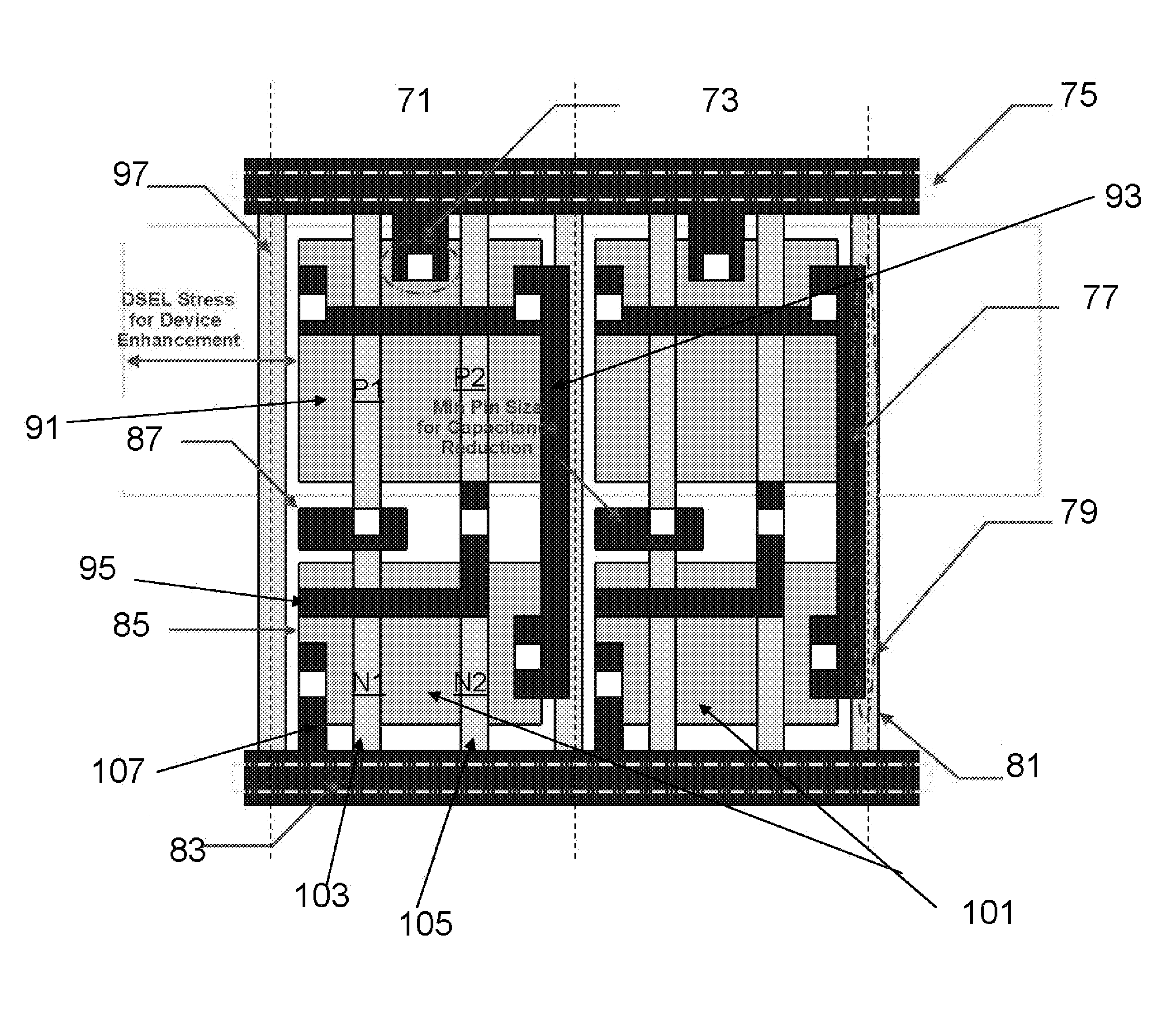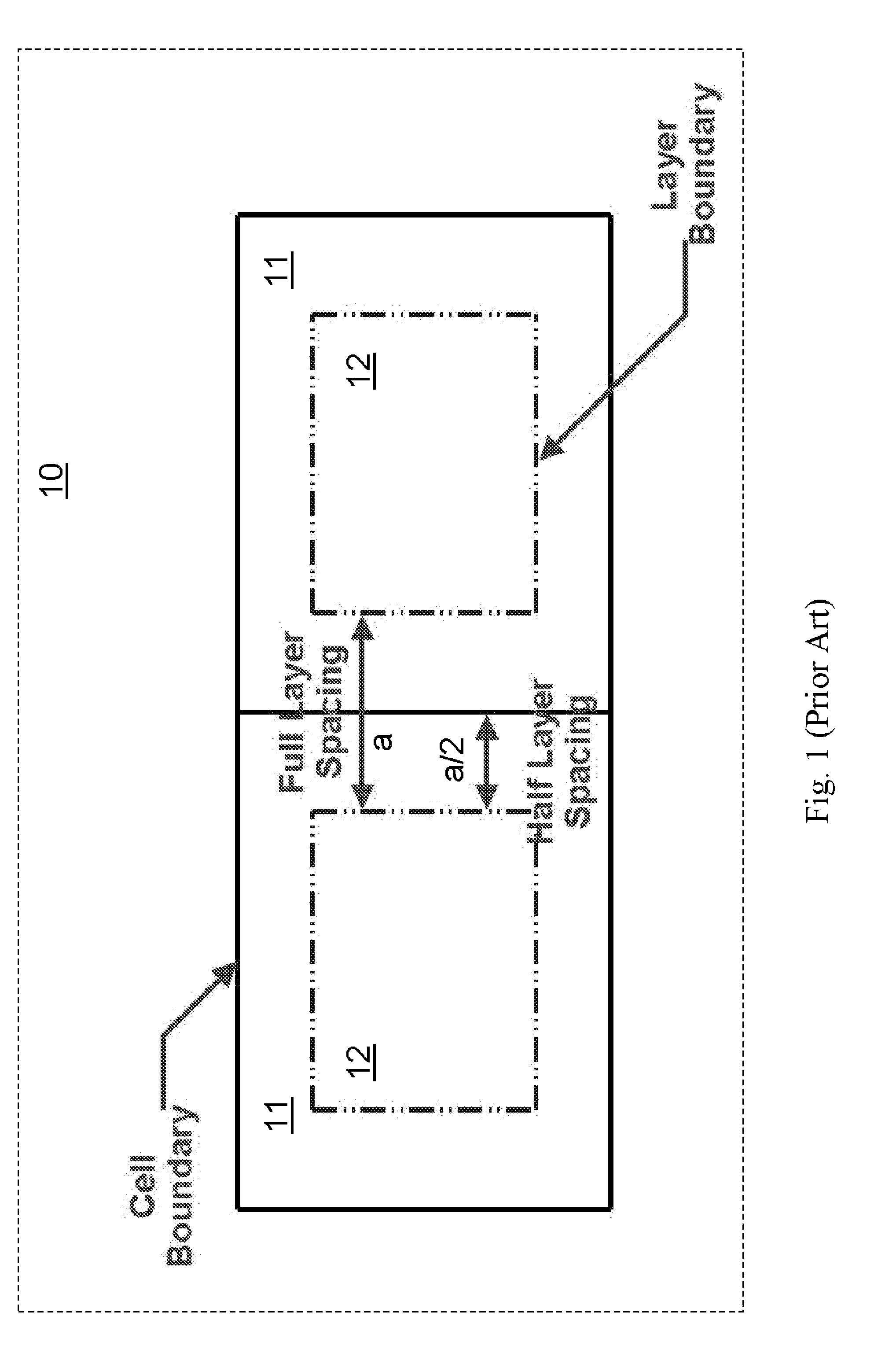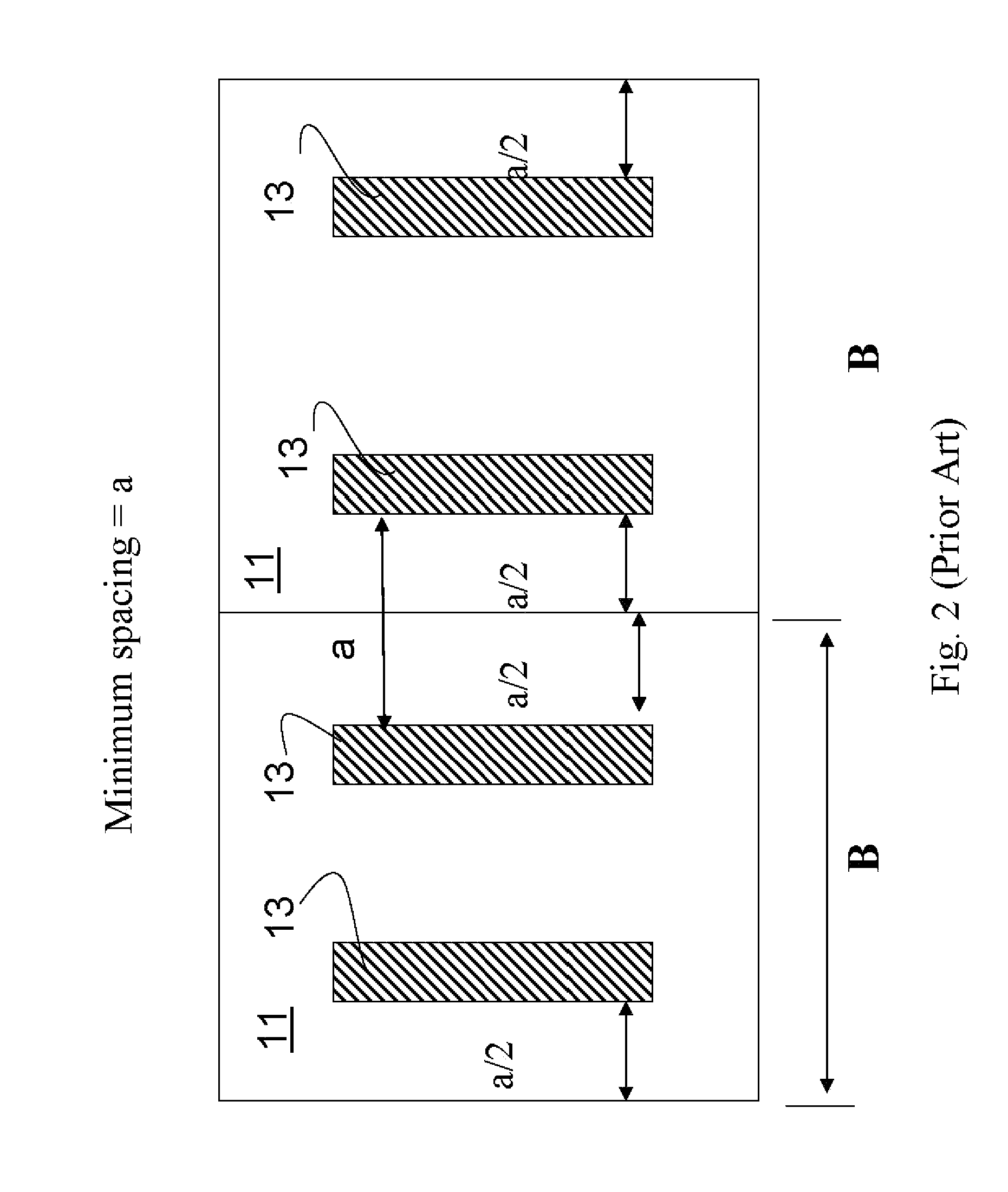Standard Cell Architecture and Methods with Variable Design Rules
a technology of design rules and standard cells, applied in the direction of semiconductor devices, semiconductor/solid-state device details, electrical devices, etc., can solve the problem of restricted design rules for standard cells
- Summary
- Abstract
- Description
- Claims
- Application Information
AI Technical Summary
Benefits of technology
Problems solved by technology
Method used
Image
Examples
Embodiment Construction
[0042]The making and using of the presently preferred embodiments are discussed in detail below. It should be appreciated, however, that the present invention provides many applicable inventive concepts that can be embodied in a wide variety of specific contexts. The specific embodiments discussed are merely illustrative of specific ways to make and use the invention, and do not limit the scope of the invention.
[0043]FIG. 5 depicts in a simple plan view a portion of an integrated circuit. For a non limiting example, the integrated circuit may be an ASIC 50 with two example standard cells 55 and 59 illustrated. This non-limiting example is used to depict the spacing rules of the exemplary embodiment. In FIG. 5, two standard cells 55 and 59 are shown placed adjacent one another. Cell 55 has a layer spacing boundary, for example metal 1 or another layer, bounding an area where the layer may be placed 57. Cell 59 has a layer spacing boundary bounding an area where the same layer may be ...
PUM
 Login to View More
Login to View More Abstract
Description
Claims
Application Information
 Login to View More
Login to View More - R&D
- Intellectual Property
- Life Sciences
- Materials
- Tech Scout
- Unparalleled Data Quality
- Higher Quality Content
- 60% Fewer Hallucinations
Browse by: Latest US Patents, China's latest patents, Technical Efficacy Thesaurus, Application Domain, Technology Topic, Popular Technical Reports.
© 2025 PatSnap. All rights reserved.Legal|Privacy policy|Modern Slavery Act Transparency Statement|Sitemap|About US| Contact US: help@patsnap.com



